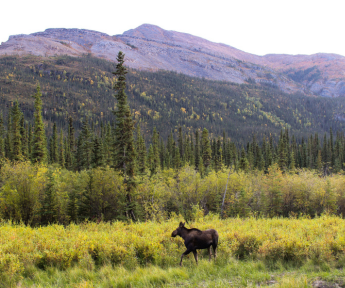Abstract
Canada has begun an ambitious project to build an observing system to monitor the changing state of its biodiversity and ecosystems. A Canada-wide Biodiversity Observation Network (CAN BON) can support the measurement, mapping, and modelling of biodiversity change—the losses and gains in the diversity of plant, animal, and microbial life—and ecosystem services. This initiative responds to eight challenges presently constraining Canada's capacity to deliver timely and robust knowledge to achieve its biodiversity goals. CAN BON is conceived as a network connecting diverse organizations to support sustained biodiversity monitoring by collaboration among universities, museums, governments, industries, NGOs, community groups, and Indigenous organizations. This inclusive network will “mobilize monitoring data” to (1) combine observation and computing infrastructures and traditional knowledge to track and understand biodiversity losses and gains across the country; and (2) link the accumulated data and knowledge to models to inform the detection and attribution of biodiversity change needed to support biodiversity policy with forecasts from local to national levels. We expect that CAN BON will foster the mainstreaming of biodiversity data and knowledge into other sectors of the economy and society, and thereby support the technical and social innovation in Canada's transition to a nature-positive future.
1. Introduction
Canada's vast expanses of intact and human-transformed ecosystems are home to rich biological and cultural diversity, spanning temperate and Arctic biomes as well as expansive coastlines on three oceans. Canada's biodiversity is changing rapidly because of unsustainable economic growth and climate change (Soroye et al. 2020; Guzman et al. 2021; Desforges et al. 2022), a global phenomenon that is deeply intertwined with both societal challenges and opportunities (Coristine and Kerr 2011). Climate change and extreme climate events exacerbate the effects of unsustainable resource extraction, urban sprawl, habitat loss, and rising numbers of invasive alien species (Roy et al. 2024), including pests and disease outbreaks (Dextrase and Mandrak 2006; Crandall et al. 2024) on both species (Prowse et al. 2009; Boisvert-Marsh et al. 2022; English et al. 2022) and ecosystems (Xu and Hisano 2024). The spread of species northwards in response to climate change may create novel ecological communities, which in some regions will bring about the loss of traditional ecosystem services while potentially supporting new fisheries and crops in other regions (Hutchings et al. 2012; Unc et al. 2021).
Understanding and quantifying biodiversity change is vital to guiding investment in actions, both political and societal, to make progress towards the goals and targets of the Kunming-Montreal Global Biodiversity Framework (GBF) of the UN Convention on Biological Diversity (CBD) (Coristine and Kerr 2011; Buxton et al. 2021; Ray et al. 2021). However, despite possessing a highly developed economy, with vibrant research and technology sectors, Canada has yet to establish a country-wide coherent strategy for knowledge exchange and services required to monitor and assess the status and trends in its biodiversity across systems. An Ecological Monitoring and Assessment Network was established in the mid-90s (Vaughan et al. 2001), but is no longer active. Similarly, a Canadian Community Monitoring Network was proposed 20 years ago to reflect the contributions of community-based monitoring (Whitelaw et al. 2003). Ultimately, the Ecosystem Status and Trends Report of Canada (Federal, Provincial, and Territorial Governments of Canada 2010) concluded that “we lack long-term, standardized, spatially complete, and readily accessible monitoring information…this significantly hinders our capacity to assess the status and health of Canada's ecosystems.” More than a decade has passed, and this observation still holds true. Encouragingly, efforts to build an inclusive, strategic, and effective long-term biodiversity observation and action program are emerging in federal (Canada's 2030 Nature Strategy) and provincial strategies and action plans for biodiversity.
The monitoring framework of the GBF has refocused attention on the importance of monitoring different facets of biodiversity to guide action addressing the causes of biodiversity loss (COP decision 15/5). Many countries have developed the capacity to do this by assembling a national Biodiversity Observation Network (BON) by adapting existing generic tools built for this purpose (Navarro et al. 2017; Gonzalez et al. 2023a). A BON equips countries and communities with the capacity to reinforce and link existing monitoring programs and implement new technologies and networks to form a knowledge service that supports policy and action for biodiversity and nature's contributions to people. The adoption of the GBF is now spurring a second wave of BON building (Gonzalez et al. 2023a). Communities within Canada have an opportunity to develop a BON benefitting from the momentum and collective learning arising from the implementation of successful BONs elsewhere (Navarro et al. 2017; Gonzalez et al. 2023a), while also addressing the unique challenges and leveraging the strengths that exist within Canada (Buxton et al. 2021; Salomon et al. 2023). Indeed, we acknowledge that Canada is a settler–colonial nation. While the Indigenous Peoples who live within Canada's borders may not identify as Canadian, reconciliation aspires to build true partnership with Indigenous governments for a society that is more just and connected.


